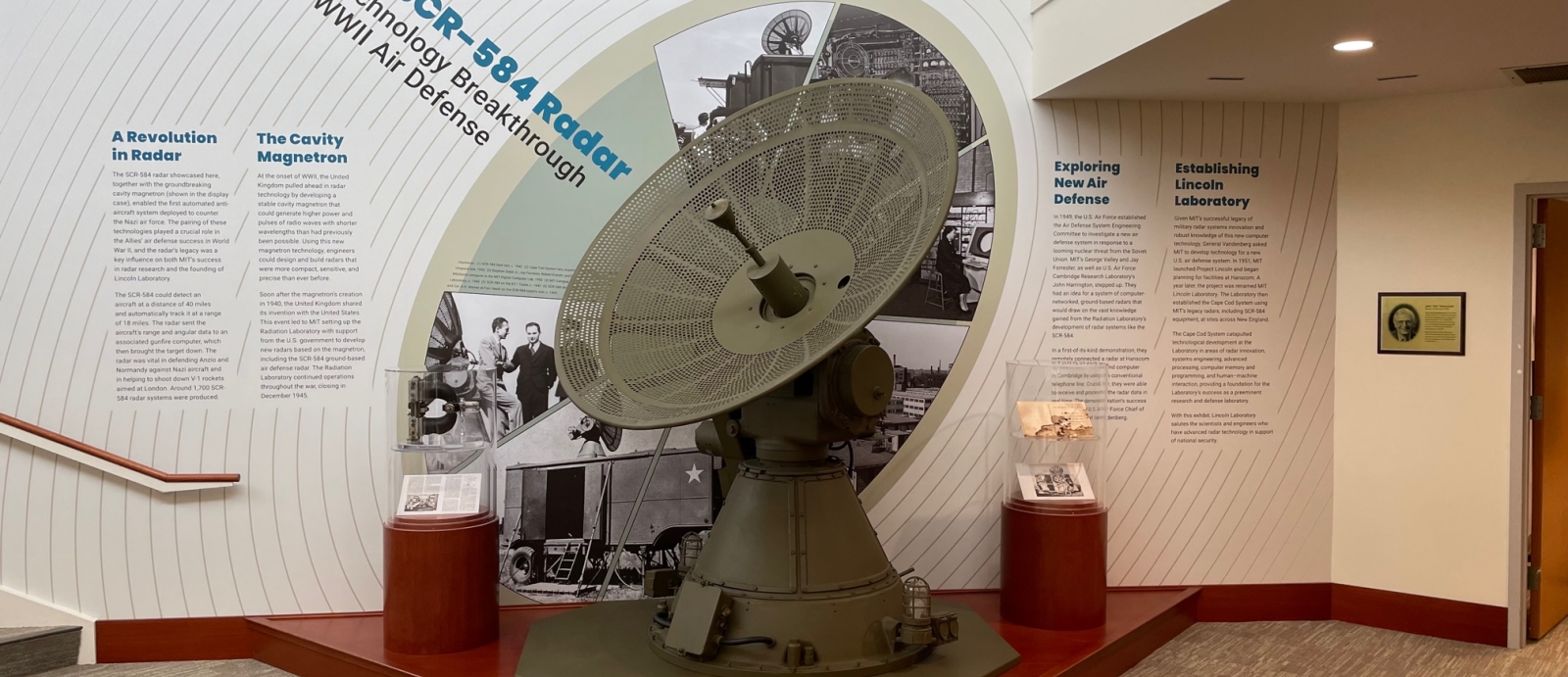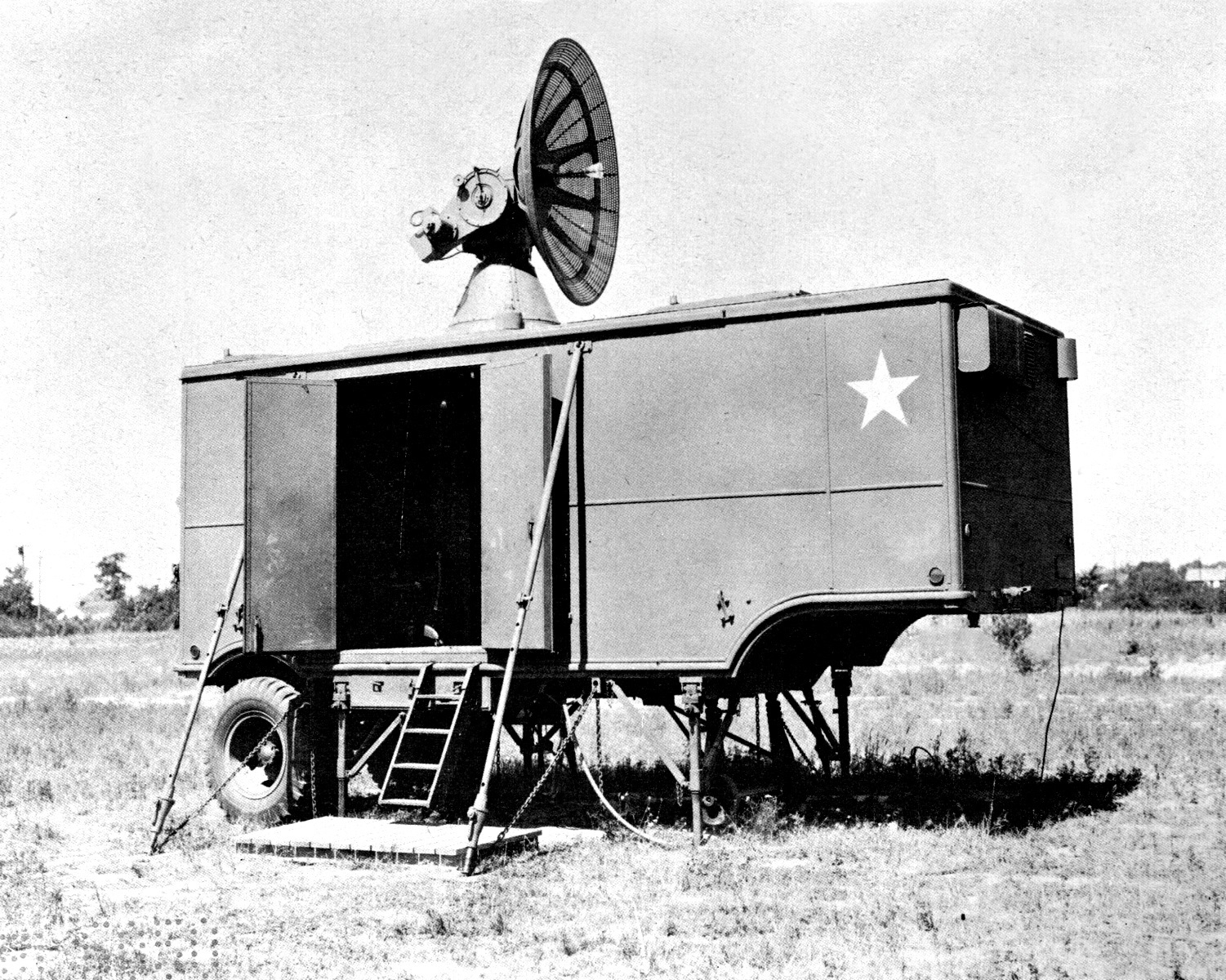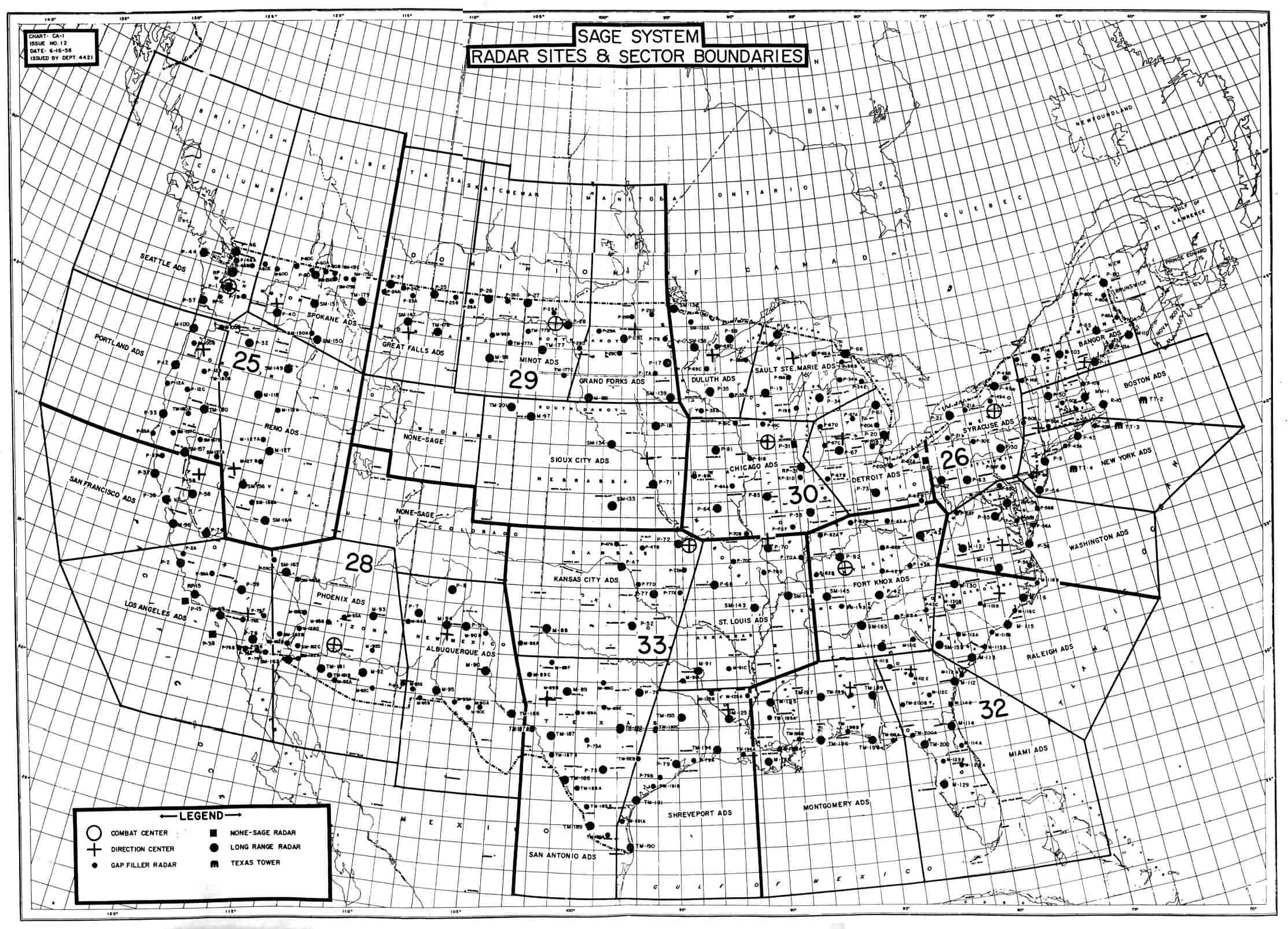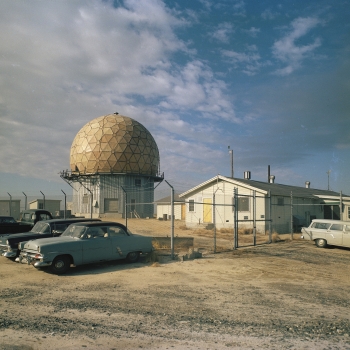
Commemorating the SCR-584 radar, a historical pioneer
In 2019, MIT Lincoln Laboratory found that a rare SCR-584 radar was residing at the Monticello, Maine, home of a World War II artifact collector. Though not built at Lincoln Laboratory, the SCR-584 is an important part of our history. Development of this radar at the MIT Radiation Laboratory in the 1940s laid the groundwork for Lincoln Laboratory's establishment in 1951. Refitted SCR-584 equipment was employed in early tests of the air defense system that the newly founded Laboratory was chartered to develop for the U.S. Air Force.
In January 2020, the rusted but intact SCR-584 arrived at the Laboratory, where it was cleaned up for installation in an exhibit honoring the vital role radar — and the scientists who expanded radar’s capabilities — played in the Allied victory.

Beginnings: The Radiation Laboratory and the SCR-584
In 1940, as war with Germany spread over Europe, British scientists, spurred by the bombing of London, were advancing microwave technology as a tool to detect incoming aircraft. Microwave systems, or radar (an acronym for radio detection and ranging), did have detection capability, but the available radar systems lacked the power to achieve the range and accuracy for feasible detection of aircraft. In September 1940, a contingent of British scientists met with the Microwave Committee of the U.S. National Defense Research Committee, which was also interested in the defense applications of radar. The British scientists brought their highly classified invention key to developing the desired powerful radar systems: the 10-centimeter cavity magnetron.
The magnetron changed the landscape of microwave technology. The magnetron could generate higher power and pulses of radio waves with shorter wavelengths than had previously been possible. With this technology, engineers could design and build more compact, sensitive, and precise radars than ever before.
MIT President Karl Compton, who headed the Microwave Committee, agreed to set up a laboratory at MIT to conduct R&D to improve the use of microwave technology in detecting and tracking aircraft and ships. From its opening in December 1940 to its closing in 1945, the Radiation Laboratory, familiarly known as the Rad Lab, made notable, vital contributions to the development of microwave radar technology in support of the war effort. Among the radar systems developed at the Rad Lab were gun-laying radars, like the SCR-584, that directed anti-aircraft fire at German bombers. The SCR-584 was a marvel of its time, able to detect an aircraft out to a distance of 40 miles and achieve a range accuracy of 75 feet. The radar sent the aircraft’s range and angular data to an associated computer that guided gunfire to the incoming target. About 1,700 SCR-584 "workhorses" were produced to provide defense against air attacks. The SCR-584 also thwarted ground-launched V-1 rockets, virtually ending the air raids on London.

Scientists at the Rad Lab developed more than 100 different radar systems, including harbor and coastal defense radars and ground-controlled radars that guided aircraft blind landings. The Rad Lab's air-to-surface vessel radars quashed the U-boat threat to Allied shipping. At the Rad Lab, staff coined the still-quoted assertion that the atomic bomb ended the war, but radar won it.
Establishment of Lincoln Laboratory
In 1949, U.S. President Harry Truman confirmed reports that the Soviets had detonated an atomic bomb. The defense establishment also knew that the Soviets were developing long-range aircraft that could reach the United States over an Arctic route. To address a potential Soviet nuclear air attack, the Department of Defense assigned the Air Force the task of improving the nation's air defense system.
George Valley, an associate professor of physics at MIT, was one of the U.S. scientists concerned about the nuclear threat. As a member of the Air Force Scientific Advisory Board, he became involved in evaluating the status of U.S. air defense. He learned the radars in current use were primarily World War II systems incapable of detecting long-range aircraft and reliant on high-frequency radio transmission that could be disrupted by a nuclear explosion.
Valley's assessment that the nation's air defenses were lacking was sent to General Hoyt Vandenberg, the Air Force chief of staff. Vandenberg acted, and in January 1950, the Air Defense Systems Engineering Committee (ADSEC), led by Valley, began investigating a new air defense system.
The ADSEC proposed an early-warning radar network linked to command stations that directed anti-aircraft measures. While new radars capable of longer-range detection would be needed, the two main difficulties to implementing such a network were the transmission of data from multiple radars to a data center and the subsequent real-time analysis of these data. The answer to the first difficulty was at the Air Force's Cambridge Research Laboratory, where John Harrington had developed the digital radar relay that converted analog radar signals into digital code transmissible over telephone lines. Valley found the solution for the second difficulty at MIT. He learned that MIT's Servomechanisms Laboratory, led by Jay Forrester, was developing a powerful new computer, nicknamed Whirlwind, capable of real-time computation.
Leading a collaborative demonstration project, Valley, Forrester, and Harrington connected a radar at Hanscom Airfield in Bedford, Massachusetts, to Whirlwind, 15 miles away in Cambridge, by using a conventional telephone line. The demonstration's success in transmitting and analyzing data in real time proved the feasibility of ADSEC's concept for a new air defense system.
Because of the Rad Lab's success in developing the SCR-584 and other unique radar systems during World War II, ADSEC recommended that the development of this new air defense system be conducted at MIT. Unwilling to commit to maintaining long-term classified defense work on campus, MIT President James Killian agreed to MIT's operation of an R&D facility that was removed from campus. Operations for the new facility that became MIT Lincoln Laboratory got underway at MIT until new buildings, 14 miles away in Lexington, Massachusetts, opened in 1952.
In 1951, staff at Lincoln Laboratory, many recruited from MIT and the former Rad Lab, began developing the air defense system envisioned by ADSEC and named the Semi-Automatic Ground Environment, or more famously SAGE. A key recommendation for the air defense system project was that a small prototype system should be constructed and evaluated before work on a more extensive system began. Lincoln Laboratory began work to set up an experimental system. In early tests, two SCR-584 radars were used to assess the capabilities of existing technology. Early tests with the SCR-584 showed much shorter detection ranges than expected; improvements in the components and the test equipment resolved the problems and made the radars operate as needed.
The experimental system was named the Cape Cod System for the location of the networked radars. This prototype air defense system, scaled down in size but realistically handling all operational functions, guided development of system modifications and enhancements. The Cape Cod System spawned much innovation to achieve the necessary overlapping radar coverage, mitigate signal clutter and phone-line noise, and advance Whirlwind to handle the massive computational demands.
The scope of SAGE was enormous. By the time of its full deployment in 1963, SAGE consisted of hundreds of radars, 24 direction centers, and three combat centers spread throughout the United States. The direction centers connected to hundreds of airfield and surface-to-air missile sites. Each direction center housed an AN/FSQ-7 computer, a successor to the Whirlwind. The AN/FSQ-7 hosted programs containing in excess of 500,000 lines of code for executing more than 25,000 instructions — by far the largest programs of that time. The direction centers automatically processed data from multiple remote radars, delivered control information to intercepting aircraft and surface-to-air missile sites, and provided command and control and situational awareness displays to approximately 100 operator stations at each center. The cost of the project, both in funding and the number of military, civilian, and contractor personnel involved, was greater than that of the Manhattan Project.

The methodology of system prototyping established during the SAGE program is still core to Lincoln Laboratory's approach to developing new system concepts.
A more detailed account of the development of the SAGE air defense system and the innovations in computing created during the SAGE project can be found here.
The Laboratory’s historical SCR-584 display was officially opened at a ribbon-cutting ceremony on June 30, 2022. In addition to honoring the importance of radar and the researchers involved in its development, the Laboratory recognized the late John Tabaczynski, a Lincoln Laboratory engineer whose expertise in radar technology advanced R&D in many Laboratory programs and whose knowledge contributed to the creation of this display.
"This exhibit honors the achievements of many from MIT and Lincoln Laboratory who made pioneering contributions to radar technology," said Lincoln Laboratory Director Eric Evans. "Their contributions forever changed the course of our history as a nation and as a Laboratory."
Further reading
"The Invention That Changed the World: How a Small Group of Radar Pioneers Won the Second World War and Launched a Technological Revolution" ─ In this book, Robert Buderi argues that a small group of radar pioneers won the second World War and launched a technical revolution.
"Rescuing Prometheus: Four Monumental Projects that Changed Our World" ─ In this book, Thomas P. Hughes looks at four large, complex technological projects that inspired new technology, new organizations, and new management styles. He featured the SAGE project for its contributions to computing.
"From World War II Radar to Microwave Popcorn, the Cavity Magnetron Was There" ─ This article by Allison Marsh appeared in the IEEE Spectrum in October 2018.
